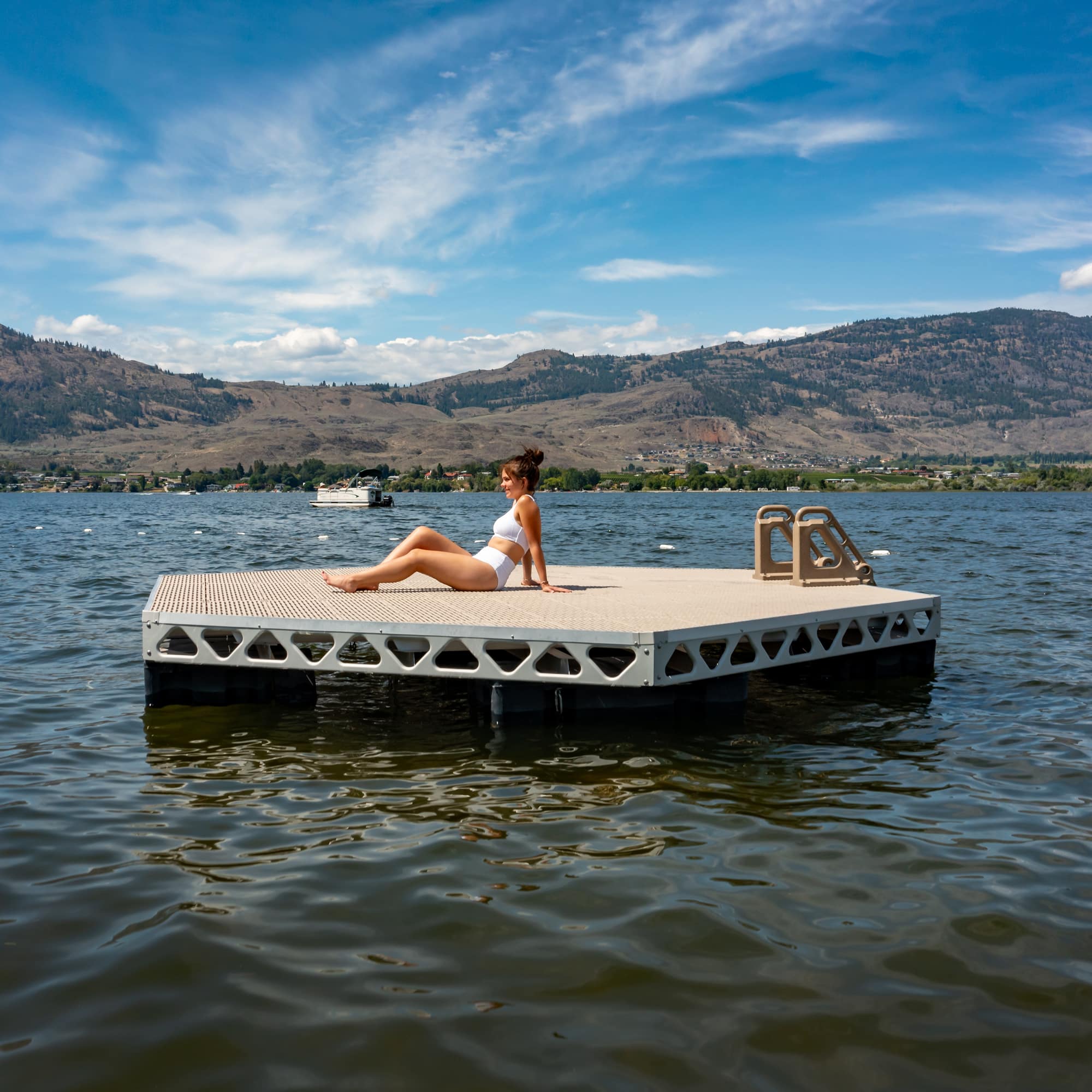Check out the Range of Floating Dock Solutions Designed to Suit Every Sailor's Needs
Check out the Range of Floating Dock Solutions Designed to Suit Every Sailor's Needs
Blog Article
Upgrade Your Waterside With Durable Floating Docks
Upgrading your beachfront with resilient floating docks can dramatically enhance both capability and aesthetics, supplying a flexible solution for different water tasks. With an array of products offered, consisting of low-maintenance options and typical wood, selecting the ideal dock can match your individual style and meet functional needs.
Advantages of Floating Docks
Floating docks offer a wide variety of benefits that boost their allure for various maritime applications. Unlike conventional set docks, floating docks rise and autumn with the tide, guaranteeing regular availability for watercrafts and watercraft no matter of environmental conditions.
Furthermore, floating docks are less complicated to set up and relocate, supplying adaptability for seasonal or momentary usage. Their modular design permits customization to fit details requirements, whether for private marinas, domestic watersides, or industrial applications.
Moreover, floating docks produce very little disruption to the marine environment, maintaining regional ecosystems and lowering the likelihood of erosion. They likewise give boosted security and stability for users, as their resilient nature offers an extra flexible surface than stiff structures.
Furthermore, floating docks can help with a diverse variety of activities, such as angling, swimming, and entertainment boating, making them a valuable asset for waterfront growth. Their versatility and usefulness make floating docks a favored choice for a selection of naval tasks.
Choosing the Right Materials
Picking suitable materials for floating docks is crucial to their longevity, performance, and general performance. When choosing materials, take into consideration factors such as ecological direct exposure, upkeep demands, and structural stability. Common products include wood, plastic, aluminum, and composite choices, each offering distinct benefits and negative aspects.
Timber, while cosmetically pleasing, requires regular maintenance to stop rot and degeneration. Pressure-treated wood can boost toughness, but it may still surrender to water damages gradually. Plastic floats, commonly made from high-density polyethylene, are immune to corrosion and require minimal upkeep, making them an attractive choice for low-maintenance applications.
Light weight aluminum is one more feasible alternative, known for its stamina and lightweight residential or commercial properties. It is immune to rust and can endure extreme weather, although it may be a lot more expensive than various other materials. Compound materials incorporate the ideal qualities of wood and plastic, using a durable and low-maintenance alternative that imitates the appearance of wood without the connected drawbacks.
Eventually, the choice of material need to align with the meant usage, ecological considerations, and spending plan constraints, ensuring a long lasting and functional floating dock that meets your details needs.
Installment Process Review
The effective installment of a floating dock depends on careful planning and execution, making sure that it runs effectively in its intended environment. The very first step involves examining site here website conditions, including water deepness, shoreline functions, and prevailing weather patterns, which will inform the dock design and anchoring system.
Adhering to the site assessment, the following stage is to prepare the floating dock components. This includes assembling the framework, safeguarding floats, and connecting any necessary equipment. It is vital to make sure that all links are water-resistant and robust to stand up to aquatic conditions.
Once the dock is put together, the installation process begins with placing the dock in the water. This can involve a crane or other training equipment, specifically for bigger structures. Appropriate placement is necessary for capability and security.

Maintenance Tips for Longevity
Routine maintenance is important for making sure the longevity and optimal efficiency of a drifting dock. To accomplish this, start with routine examinations at the very least twice a year, concentrating on the stability of the dock's framework, including the flotation devices and attaching equipment. Seek indications of rust, damages, or wear, and deal with any kind of problems quickly to stop additional wear and tear.
Cleansing is one more crucial facet of upkeep. Eliminate debris, algae, and barnacles from the dock's surface area to stop unsafe problems and keep aesthetic appeal. Use a soft brush and a moderate cleaning agent to prevent harming the dock's materials.
In addition, guarantee that the dock is correctly secured and protected to stand up to seasonal modifications in water levels and climate conditions. Check the anchoring system for security and make modifications as essential.
Enhancing Your Outside Aesthetic
To create an aesthetically appealing exterior room, integrating a floating dock can substantially improve the total aesthetic of your waterfront home. Floating docks are not only useful yet can likewise serve as a striking focal point that enhances the natural environments - dock company. Offered in various materials and layouts, these docks can be customized to match your building's architectural style and landscape
The addition of decorative components, such as integrated lighting or trendy barriers, additionally boosts the dock's aesthetic appeal. Consider utilizing all-natural wood surfaces, which mix perfectly with the atmosphere, or deciding for modern-day products like light weight aluminum or composite outdoor decking that offer a smooth, look here contemporary look.
Purposefully positioning planters or seating locations on or around the dock can develop welcoming rooms that urge leisure and enjoyment of waterside sights. Additionally, incorporating colors and textures that balance with your landscape will certainly produce a cohesive aesthetic throughout your outside location.

Final Thought

Upgrading your waterside with sturdy floating docks can considerably boost both functionality and visual appeals, giving a versatile remedy for different water activities. Unlike typical fixed docks, floating docks surge and autumn with the tide, making sure constant availability for watercrafts and watercraft no matter of ecological problems.Selecting suitable materials for floating docks is crucial to their durability, performance, and total efficiency.As soon as the dock is put together, the setup process starts with positioning the dock in the water.In recap, floating docks offer many advantages, consisting of adaptability to water level adjustments and a range of material alternatives.
Report this page